


xxxxxWith the capture of Sevastopol in September 1855 the Crimean War virtually came to an end. At the Treaty of Paris, signed in March 1856 between Russia and the Allies (France, Britain, Turkey and Sardinia), the integrity and independence of Ottoman Turkey were recognised, and Russia was obliged to return southern Bessarabia to Moldavia, and was banned from keeping warships in the Black Sea. In addition, Moldavia and Wallachia - for long under Russian influence - were confirmed as autonomous states under Ottoman protection, and the Danube was made an international waterway. Such humiliating terms set Russia on a path of modernisation, led by its new Tsar, Alexander II, but the greatest outcome of the Crimean War was the estrangement it brought about between Russia and Austria, allies for many years in stifling liberalism in central Europe. This gave impetus to independence movements aimed at overthrowing Austrian control, and led to the eventual unification of Italy and Germany. In the meantime, the gross mismanagement of the war on both sides - due to poor leadership -, and the enormous loss of life caused by disease and the lack of medical care, brought about much needed reforms. In Britain there was much criticism of the way in which the war had been conducted, and nurse Florence Nightingale played a major part in introducing an efficient nursing system to cater for the sick and wounded in time of war.
THE END OF THE CRIMEAN WAR 1853 - 1856 THE TREATY OF PARIS 1856 (Va)
Acknowledgements
Map (Balkans): licensed under Creative Commons – en.wikipedia.org. Alexander II: watercolour and gouache by the Russian artist Alexander Matveyevich Wegner, 1870s – Hermitage Museum, St. Petersburg. Sevastopol: after the English artist Edward Angelo Goodall (1819-1908), 1855 – Wellcome Library, London. Palmerston: detail, by Francis Cruikshank (1825-1881), 1855/59 – National Portrait Gallery, London.
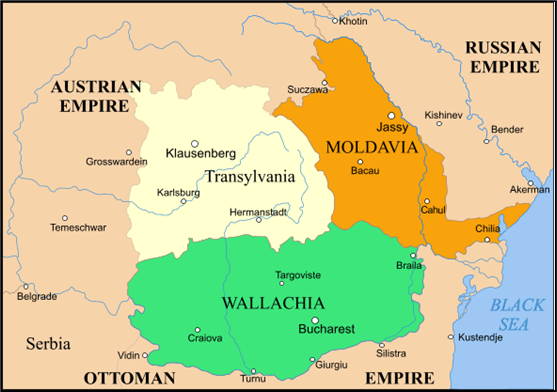 xxxxxAs we have seen, the Allied capture of the Russian naval base of Sevastopol in September 1855 virtually put an end to the Crimean War. However, it was not until the New Year that the Russians eventually gave in, forced to the peace table when their former ally, Franz-Joseph of Austria - concerned at Russian designs on the Balkans - threatened to join in the war against them.
xxxxxAs we have seen, the Allied capture of the Russian naval base of Sevastopol in September 1855 virtually put an end to the Crimean War. However, it was not until the New Year that the Russians eventually gave in, forced to the peace table when their former ally, Franz-Joseph of Austria - concerned at Russian designs on the Balkans - threatened to join in the war against them.
xxxxxThe Treaty of Paris, signed in March 1856 between Russia and the Allied powers of France, Britain, Sardinia and Turkey, imposed a strict curb on Russia’s ambitions in the Middle East. By its terms, the integrity and independence of Ottoman Turkey were recognised - what little was left of both. Russia was obliged to return the three districts of southern Bessarabia to Moldavia, and, together with all other nations, was banned from keeping warships in the Black Sea. In addition, Moldavia and Wallachia - for long under Russian influence - were confirmed as autonomous states under Ottoman protection, and the River Danube was opened to the shipping of all nations.
xxxxxBut the outcome of the Crimean War, confined though it seemed to be to the curbing of Russian ambitions in the Balkans and the Black Sea, proved of much greater significance in the long-term political history of Europe. The Treaty of Paris unsettled rather than settled the affairs of the continent. It brought about the final collapse of the Concert of Europe - established in 1815 to keep the peace following the Napoleonic Wars - and it put an end, above all, to that old coalition between Russia and Austria which had suppressed liberal reform in central Europe over the past forty years. A Russia humiliated by defeat, and an Austria deprived of Russian support, gave impetus to independence movements aimed at overthrowing Austrian hegemony. As we shall see, this was to lead to the first moves in the unification of Italy (1859) and Germany (1866 Vb), and the largest restructuring of the European map since the defeat of Emperor Napoleon in 1815.
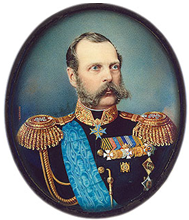 xxxxxNor, in fact, did the treaty find long-term solutions to the problems in south-east Europe. These continued to simmer whilst Russia, under its new emperor Alexander II (illustrated), set about regaining its lost position as a major European power. Out of the humiliating setback on the battlefield emerged a sweeping programme of “modernisation” designed to re-establish Russia’s dominant role in Western Europe in general and the Black Sea area in particular. And in addition to his measures to emancipate the serfs, introduced in 1861, these reforms included a complete overhaul of the Russian army which, despite its superiority in numbers, and its abundance of reserves, had muddled through the war with little sense of direction. The Russian garrison at Sevastopol had put up a commendable fight, but at command level there had been constant failures over the provision of transport and the sending of supplies.
xxxxxNor, in fact, did the treaty find long-term solutions to the problems in south-east Europe. These continued to simmer whilst Russia, under its new emperor Alexander II (illustrated), set about regaining its lost position as a major European power. Out of the humiliating setback on the battlefield emerged a sweeping programme of “modernisation” designed to re-establish Russia’s dominant role in Western Europe in general and the Black Sea area in particular. And in addition to his measures to emancipate the serfs, introduced in 1861, these reforms included a complete overhaul of the Russian army which, despite its superiority in numbers, and its abundance of reserves, had muddled through the war with little sense of direction. The Russian garrison at Sevastopol had put up a commendable fight, but at command level there had been constant failures over the provision of transport and the sending of supplies.
xxxxxBut the Allied armies also had their military shortcomings. In Britain, for example, the Crimean War had started amid a public display of frenzied jingoism. Those who had opposed the war - such as the reformers Richard Cobden and John Bright - had been vilified and cast as traitors. As the war dragged on, however, glaring defects in the British military system were exposed by press reports, particularly those of the Times war correspondent William Howard Russell. It was then realised that little if any attempt had been made to bring the army up to date since the days of the Napoleonic Wars. There were acute shortages of equipment and basic supplies, uniforms remained totally unfit for active service, and the restriction in the number of frontline men, put at around 27,000, meant that any losses had to be replaced by raw recruits. And even more lamentable was the incompetent staff work - leading to the lack of logistic support when and where it was needed -, and the amateurish, inept approach of the inexperienced field commanders, many of whom saw the war as nothing more than a welcome spot of adventure. Lord Raglan had never led troops into battle, the Earl of Cardigan had never seen active service, and Lord Lucan had seen action but once, twenty-six years earlier!
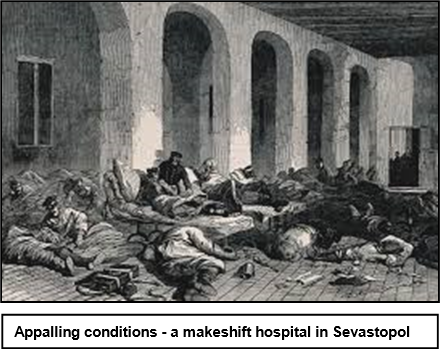 xxxxxAnd added to this, was the appalling suffering of the troops on both sides. Quite apart from the hardships endured by the Allied forces during the winter of 1855/56 - due in large part to the lack of adequate clothing and limited food supplies - disease was rampant in the camps and the so-called hospitals. It is estimated that diseases such as cholera, dysentery and typhus accounted for more deaths than those on the battlefield. In the British army, as we have seen, this appalling lack of medical services prompted the work of the English nurse Florence Nightingale. It was mainly through her efforts that an efficient nursing service was set up to cater for the sick and wounded in time of war.
xxxxxAnd added to this, was the appalling suffering of the troops on both sides. Quite apart from the hardships endured by the Allied forces during the winter of 1855/56 - due in large part to the lack of adequate clothing and limited food supplies - disease was rampant in the camps and the so-called hospitals. It is estimated that diseases such as cholera, dysentery and typhus accounted for more deaths than those on the battlefield. In the British army, as we have seen, this appalling lack of medical services prompted the work of the English nurse Florence Nightingale. It was mainly through her efforts that an efficient nursing service was set up to cater for the sick and wounded in time of war.
xxxxxIn Britain, one man in particular who spoke out vehemently against the war, its conduct, and its peace settlement was John Bright, the English politician who, as we have seen, had been a prominent leader of the Anti-Corn Law League in the 1840s. In his Common speeches, he condemned the Crimean War as a “crime”, arguing that it was completely unnecessary, totally mismanaged, and the “nadir of stupidity”. Furthermore, he held that its settlement was harmful to British interests, and served only to make more precarious the political situation in Europe. An outstanding orator, his speeches were widely reported and won over much support. And the up-and-coming politician William Ewart Gladstone, who had supported the war in 1854 as a means of curbing Russian expansion, was claiming that the war was no longer justified by the summer of 1855.
xxxxxThe Crimean War put a brake on Russian advance into the Balkans, but not for long. As we shall see, the Russo-Turkish War, beginning in 1877 (Vb), gave Russia yet another opportunity to expand southwards. International intervention was again required to stop the advance.
 xxxxxIncidentally, two distinctive pieces of clothing have their origin in the Crimean War. The balaclava helmet, named after the battle of that name, was a woollen garment worn tightly over the head and neck, thereby leaving little of the face exposed to the bitter weather (illustrated). And the British commander-in-chief, Lord Raglan, gave his name to an overcoat he wore which had no shoulder seams - the raglan sleeve. ……
xxxxxIncidentally, two distinctive pieces of clothing have their origin in the Crimean War. The balaclava helmet, named after the battle of that name, was a woollen garment worn tightly over the head and neck, thereby leaving little of the face exposed to the bitter weather (illustrated). And the British commander-in-chief, Lord Raglan, gave his name to an overcoat he wore which had no shoulder seams - the raglan sleeve. ……
xxxxx…… The Crimean War saw the first tentative use of telegraphic communication to co-ordinate military operations and control the movement of supplies. And the employment of more powerful guns necessitated the wider use of armour plating as a means of protection. ……
xxxxx…… In 1859 the two Balkan principalities of Moldavia and Wallachia agreed to combine to form the single state of Romania. The union was officially formed in 1862, and achieved its independence from Turkey in 1878. ……
xxxxx…… And during the peace settlement the able prime minister of Sardinia-Piedmont, Count Cavour, who had taken his country into the war in support of the French and British, took the 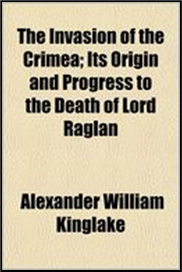 opportunity to draw international attention to the plight of Italy, still divided and dominated in large measure by an Austrian regime. As we shall see, the first steps towards unification and independence in this country began four years later in 1859. ……
opportunity to draw international attention to the plight of Italy, still divided and dominated in large measure by an Austrian regime. As we shall see, the first steps towards unification and independence in this country began four years later in 1859. ……
xxxxx…… Axhistory of the Crimean War was written by the English travel writer and historian Alexander William Kinglake (1809-1891), based on his own observations of the conflict. Entitled Invasion of the Crimea, it was produced in eight volumes and was published from 1863 to 1887. As a friend of Lord Raglan, it was considered by some critics that the work was biased in favour of the British contribution.
Including:
Lord Palmerston

Va-1837-1861-Va-1837-1861-Va-1837-1861-Va-1837-1861-Va-1837-1861-Va-1837-1861-Va
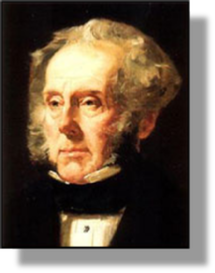 xxxxxAmong those British statesmen taken to task by John Bright was the prime minister Lord Palmerston (1784-1865). Following strong criticism of the government’s handling of the conflict, he took over the management of the Crimean War in 1855 and, pursuing a more vigorous policy, brought the war to a successful conclusion by the end of the year.
xxxxxAmong those British statesmen taken to task by John Bright was the prime minister Lord Palmerston (1784-1865). Following strong criticism of the government’s handling of the conflict, he took over the management of the Crimean War in 1855 and, pursuing a more vigorous policy, brought the war to a successful conclusion by the end of the year.
xxxxxLord Palmerston served in the House of Commons for 58 years, and became a towering figure in British foreign policy. An outspoken supporter of liberalism and nationalism (when it served his purpose!), and ever distrustful of French and Russian political designs, he served as Whig foreign secretary almost continuously from 1830 to 1851. During that time, as we have seen, he played an outstanding part in gaining independence for the Belgians in 1830, and, in order to open up Chinese ports to British trade, initiated the First Opium War in 1839. And in the same year he successfully prevented the Egyptian ruler Muhammad Ali - and his French backers - from gaining control of the Ottoman Empire. Later, in the troubled years of 1847 and 1848, he dissuaded both the Austrians and French from intervening in the Swiss civil war, and gave support to Italian patriots in their struggle for independence.
xxxxxIn the last ten years of his life, during which time he became prime minister for a second term, he launched the Second Opium War against China in 1856 - this time in collaboration with the French - and the following year ruthlessly suppressed the Indian Mutiny and put an end to the rule of the British East India Company. In the early 1860s he just managed to keep Britain neutral during the American Civil War, but, as we shall see, he met his match in the Prussian prime minister Otto von Bismarck during the Schleswig-Holstein Question of 1864 (Vb). He died the following year.
 xxxxxIncidentally, during his last term as foreign secretary (1846-1851) Palmerston earned a reputation for what came to be known as his “gunboat diplomacy” - his willingness to use force anywhere in the world to achieve his diplomatic objective. A good example of this policy occurred in 1850 when, in order to obtain compensation for a British subject whose house in Athens had been looted and burned, he had the Royal Navy seize a number of Greek ships until recompense was made. Such highhanded use of force was not always appreciated by his ministers, and it is known that Queen Victoria disapproved of such methods, but his stout defence of all that was British made him very popular with the general public. ……
xxxxxIncidentally, during his last term as foreign secretary (1846-1851) Palmerston earned a reputation for what came to be known as his “gunboat diplomacy” - his willingness to use force anywhere in the world to achieve his diplomatic objective. A good example of this policy occurred in 1850 when, in order to obtain compensation for a British subject whose house in Athens had been looted and burned, he had the Royal Navy seize a number of Greek ships until recompense was made. Such highhanded use of force was not always appreciated by his ministers, and it is known that Queen Victoria disapproved of such methods, but his stout defence of all that was British made him very popular with the general public. ……
xxxxx…… Lord Palmerston, who was born Henry John Temple and educated at Harrow School and the Universities of Edinburgh and Cambridge, was the son of an Irish peer and was not barred, therefore, from sitting in the House of Commons.
xxxxxThe British statesman Lord Palmerston (1784-1865) took over the management of the Crimean War in 1855, and, pursuing a more vigorous policy, brought the war to an end later that year. A member of the House of Commons for 58 years, he spent nearly twenty years as foreign secretary, and served two terms as prime minister. Earlier in his career he played a prominent part in gaining Belgian independence in 1830, and he opened Chinese ports to British trade by initiating the First Opium War in 1839. And it was in that year that he intervened to prevent the Egyptian ruler Muhammad Ali from gaining control of the Ottoman Empire. Later, following the Second Opium War against China, he ruthlessly crushed the Indian Mutiny in 1857, and then put an end to the rule of the British East India Company. As we shall see, he managed to keep Britain neutral during the American Civil War, but the Prussian prime minister Otto von Bismarck got the better of him diplomatically during the Schleswig-Holstein Question of 1864 (Vb).






 xxxxxAs we have seen, the Allied capture of the Russian naval base of Sevastopol in September 1855 virtually put an end to the Crimean War. However, it was not until the New Year that the Russians eventually gave in, forced to the peace table when their former ally, Franz-
xxxxxAs we have seen, the Allied capture of the Russian naval base of Sevastopol in September 1855 virtually put an end to the Crimean War. However, it was not until the New Year that the Russians eventually gave in, forced to the peace table when their former ally, Franz- xxxxxNor, in fact, did the treaty find long-
xxxxxNor, in fact, did the treaty find long- xxxxxAnd added to this, was the appalling suffering of the troops on both sides. Quite apart from the hardships endured by the Allied forces during the winter of 1855/56 -
xxxxxAnd added to this, was the appalling suffering of the troops on both sides. Quite apart from the hardships endured by the Allied forces during the winter of 1855/56 - xxxxxIncidentally, two distinctive pieces of clothing have their origin in the Crimean War. The balaclava helmet, named after the battle of that name, was a woollen garment worn tightly over the head and neck, thereby leaving little of the face exposed to the bitter weather (illustrated). And the British commander-
xxxxxIncidentally, two distinctive pieces of clothing have their origin in the Crimean War. The balaclava helmet, named after the battle of that name, was a woollen garment worn tightly over the head and neck, thereby leaving little of the face exposed to the bitter weather (illustrated). And the British commander- opportunity to draw international attention to the plight of Italy, still divided and dominated in large measure by an Austrian regime. As we shall see, the first steps towards unification and independence in this country began four years later in
opportunity to draw international attention to the plight of Italy, still divided and dominated in large measure by an Austrian regime. As we shall see, the first steps towards unification and independence in this country began four years later in 
 xxxxxAmong those British statesmen taken to task by John Bright was the prime minister Lord Palmerston (1784-
xxxxxAmong those British statesmen taken to task by John Bright was the prime minister Lord Palmerston (1784- xxxxxIncidentally, during his last term as foreign secretary (1846-
xxxxxIncidentally, during his last term as foreign secretary (1846-

